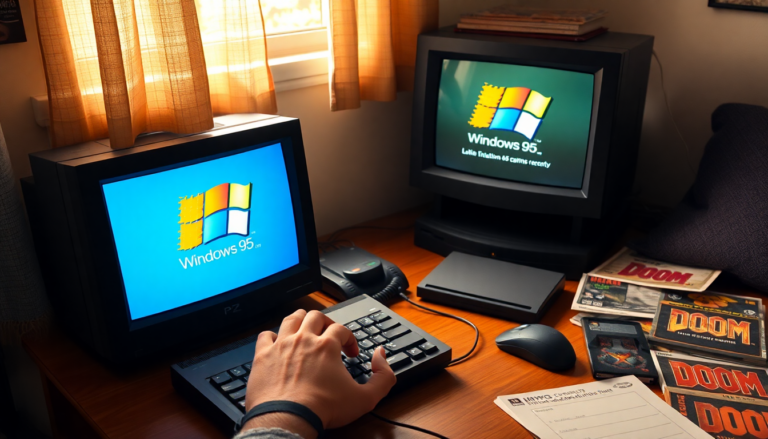Argomenti trattati
When it comes to retro computing and gaming, trying to run vintage software on modern hardware can be a delightful trip down memory lane, but it’s not without its challenges. A recent adventure into booting Windows 95 and playing Doom on the PlayStation 2 (PS2) showcases the fascinating interplay between software and hardware compatibility. This exploration not only highlights the technical obstacles that enthusiasts face but also celebrates the determination required to pull off such nostalgic feats.
Setting the Stage for a Retro Revival
The journey kicked off with a YouTube creator named Jace, who has made a name for themselves by diving into the world of vintage technology. Armed with a modded PS2, a game controller fitted with a QWERTY keyboard, and storage solutions like a USB stick and hard drive, Jace set out on the ambitious quest to boot Windows 95. Despite the PS2’s impressive technology—having launched in 2000 compared to Windows 95’s debut in 1995—the task proved to be anything but simple. Jace’s initial strategy involved using DOSBox, an emulator designed for running DOS applications, to coax Windows 95 into life.
However, after a staggering 47 failed attempts to boot, Jace decided to switch gears and use Bochs, a general-purpose x86 emulator. This wasn’t just a simple tool change; it reflected a deeper understanding of the hardware’s limits and capabilities. While DOSBox is great for simpler gaming experiences, Bochs aims for a more comprehensive emulation, albeit at a slower speed. This transition highlighted the complexities involved in running legacy software on hardware that wasn’t originally intended for it. Have you ever found yourself grappling with technology that feels like it’s from another world?
Technical Hurdles: The Frustrations of Emulation
The road was riddled with challenges. Jace encountered a host of issues, from read and write errors to drive letter configuration headaches and missing files. Each obstacle required a careful approach to problem-solving, with Jace tweaking boot orders and mounting drives to achieve compatibility. It was a painstaking process demanding both patience and technical skill—traits that truly define the spirit of retro computing enthusiasts.
Despite the often frustrating pace—hampered by the PS2’s limited I/O capabilities—the moment Jace finally laid eyes on the Windows 95 setup screen felt like a monumental victory. After around 14 hours of relentless effort, they reached the desktop and even accessed basic applications like Paint. However, the experience was somewhat marred by the absence of a mouse, showcasing the inherent limitations of the setup. Attempts to launch Doom didn’t yield success, but the journey itself was filled with learning and discovery. Have you ever experienced that sweet victory after a long struggle with technology?
Reflections on a Retro Adventure
This entire endeavor underscores a fundamental aspect of technology: the blend of nostalgia and innovation. Emulating old operating systems like Windows 95 on a console such as the PS2 goes beyond merely running software; it’s about rekindling memories and engaging with technology from a bygone era. Jace’s experience stands as a testament to the dedication of those who strive to connect the dots between past and present tech.
Ultimately, the journey, laden with technical challenges and moments of triumph, illustrates that the real reward lies in the experience itself. While the practical uses of such emulation may be limited, the knowledge gained and the satisfaction of overcoming these hurdles resonate profoundly within the tech enthusiast community. As we continue to explore the realms of vintage computing, let’s celebrate both the challenges and innovations that come with these nostalgic ventures. What retro tech adventure will you embark on next?

